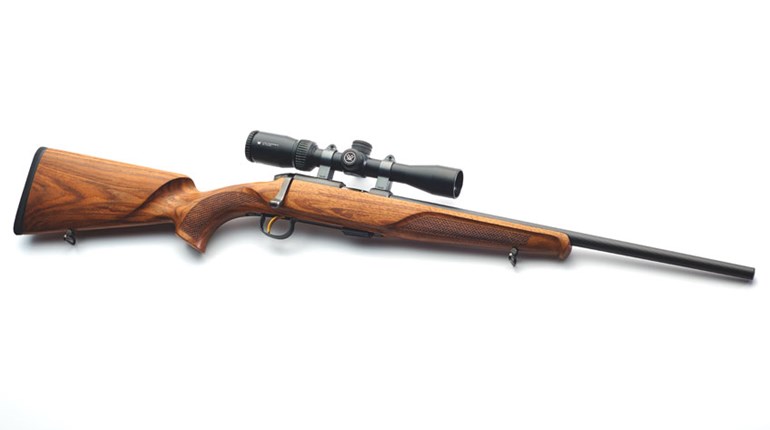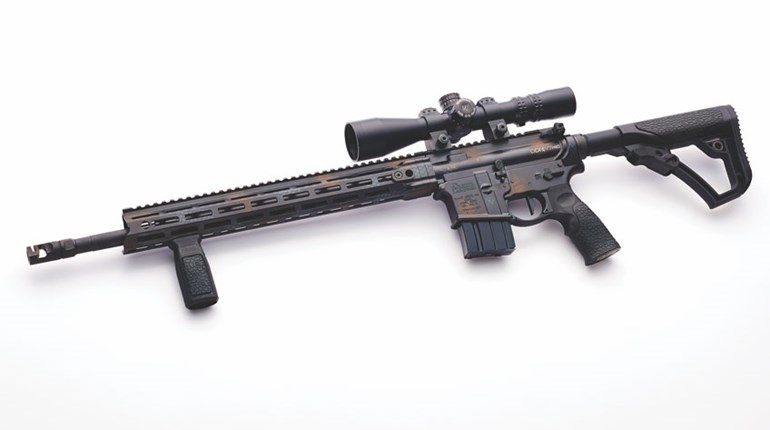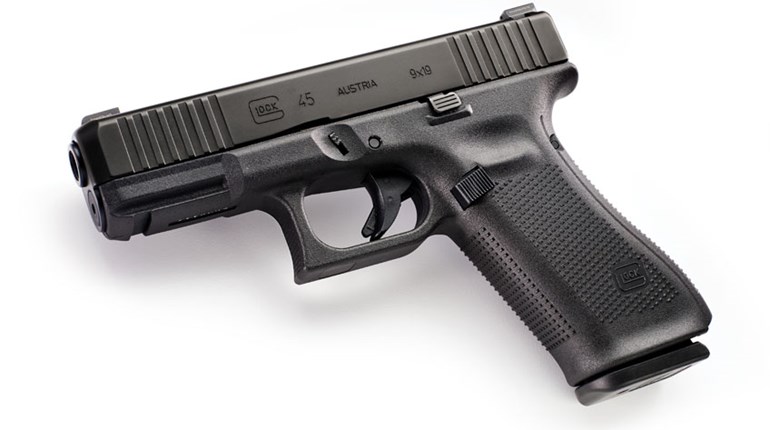
Carry Life recently spent a couple of columns on ammunition problems: Sooner or later, they will find you. At the back end of the cartridge, we worry mainly about priming problems, which produce hard-to-diagnose failures to fire. At the front, we worry more about feeding problems. While there are many contributing factors in such mischances, slide speed and bullet nose/feed ramp collision are the critical fractions.
Whatever the cause, however, ammo not going “bang” is never good news, and you should regularly practice how to overcome such a state in your defensive/carry gun.
Let’s start with a very brief review of the three main types of malfunctions. Whatever the cause, however, ammo not going “bang” is never good news, and you should regularly practice how to overcome such a state.
Failure to fire is by far the most common, and is usually an ignition problem—an absent round (due to incomplete mag insertion or short cycling), or a high, hard, absent or deactivated primer, or (somewhat less likely) a firing pin/striker issue. In gun parlance, this is a “Type I” stoppage.
Failure to eject is often a more complex stoppage in several important ways. If you’re running your own handloaded ammo, it generally means too little cartridge power or too much recoil spring—there isn’t enough energy to satisfy the budget of your pistol. This problem can be exaggerated in physically smaller pistols for a variety of reasons.
Keep in mind that perfectly adequate ammunition can exhibit problems here too. If your grip architecture and mechanics are flawed, you may be acting as a too-effective shock absorber for your handgun, and robbing it of energy it needs to operate (otherwise known as “limp-wristing”). These are all “Type II” stoppages, with the most common version being a “stove pipe.”
Feed blockage is the most complex and difficult to clear malfunction—the dreaded Type III or “double-feed”—and it should be incredibly rare in any “Carry Life” arm. It’s generally indicative of a serious ammunition/handgun incompatibility, and shouldn’t be tolerated. There are plenty of firearm and ammo combos that practically never do this. These malfunctions originate with a case or cartridge still in the chamber as a subsequent round is stripped and fed from the magazine. The new round slams into the rear of the still-chambered case or cartridge, and creates a lock-up under the full return energy of the recoil spring(s). It’s small wonder they’re hard to clear.
Rarely, these actually signal a broken gun (broken extractor claw or related component), but it’s much more likely that said claw just “hopped” the extractor groove and rim of the case. Either way, any frequency here at all should generate a trip to your gunsmith.
If you now have a minor case of the shakes, we apologize: Yes, there’s a lot that can go wrong. If not, congrats on owning a modern, likely striker-fired gun (or a properly tuned 1911). You won’t see many Type IIIs in either variety.
We nevertheless have good news for those times when you do encounter these: One method corrects these malfunctions—tap, rack. In the case of a Type III, you have to add two steps, but you enter and hopefully exit the process the same for virtually any auto-loader. If you now have a minor case of the shakes, we apologize: Yes, there is a lot that can go wrong.
First is the “tap.” This is a blow to the bottom of the magazine with the weak hand, and ensures the magazine is fully seated.
Ideally, the pistol has moved as little as possible from the line of any threat you’re facing, though a common variant exists: The pistol comes back toward the chest and is rotated slightly toward that weak hand. You will encounter this in shooters with competition backgrounds mainly because it increases the power that can be applied on the base plate of the mag. Because the less-extended, strong arm/hand (still holding the firearm) doesn’t move as much under the upward impact of the tap, more net force is applied to fully seating the magazine.
We’re agnostic here: Keeping that pistol as close as possible to its next shooting position is always desirable. But in class we see the extended-arms method routinely fail for less powerful, less experienced shooters, and especially with full and/or new and/or double stack magazines. It’s surprisingly hard to apply enough leverage to seat these mags (you’ve already failed once, after all), and a double-clutch, multiple attempt solution is decidedly not the answer. Try them both to figure out what works for you. The first time, every time method is the winner—train to that technique.
Next comes “rack.” Here, the weak hand comes up and over from the side (malfunction clearing is not an excuse to sweep or flag yourself with the muzzle), and grasps the slide by opposing the finger tips on the strong side to the base of the thumb/lower palm on the weak side. This points the thumb at your face or upper chest, and allows you to rapidly, powerfully cycle/clear the action and chamber a new round. Remember: When the slide reaches the limit of rearward travel, release it immediately—easing or “nursing” it back into battery actually increases the likelihood of further malfunction.
Just saying: If you’re still “sling-shotting” the slide, here’s yet another reason to abandon this ergonomically weak, badly-out-of-date technique for cycling.
“Tap, rack” quickly repairs both Type I and Type II malfunctions. On the latter, note that there’s no need to explicitly remove a stove-piped case. You can practice this by prepositioning a stove pipe, and you’ll see what we mean: A proper weak hand grasp and energetic running of the slide clears the case by default. For either a Type I or II, you’re back in action.
Take a look below to see this done; Thunder Ranch’s Clint Smith demonstrates on multiple pistols to rare perfection. (Rare for mere mortals, that is, quite obviously not for him.) If you hang in there, he also takes you through the added steps to address Type III malfunctions (at about 3:15).
In this unwelcome fiasco, both tap and rack are ineffective, though we repeat them anyway. “Why,” is simple: Detailed inspection as to precisely what went wrong may be hampered by poor light, and is certainly hampered by the need to get your firearm running again right now. As Smith points out, tap/rack will clear the simpler (and more likely) faults de facto, but also quickly make apparent when the additional steps for a Type III are needed.
The first step for resolving a III is to unload the pistol. As always, this means removing the ammunition source (that magazine thingy) first. In the video, Smith does it “with retention,” in line with the soundest defensive doctrine. Many competitive shooters simply dump the mag to the ground—faster, certainly, but only practical with a belt full of replacements at the ready.
An often-overlooked reminder here pays: Be prepared to be very, very aggressive in getting the magazine out. The partially fed cartridge and both mag and recoil springs contribute substantial tension to the problem. While we’d prefer to see folks master resolution without locking the slide back—this adds both time and steps—for some shooters there is simply no alternative for relieving the counterproductive forces that are keeping their pistol out of action. Yanking the mag out hard is considerably preferable, but do what you must.An often-overlooked reminder here pays: Be prepared to be very, very aggressive in getting the magazine out.
Now finish your unload by cycling the slide several times. The absolute minimum is twice, though three or four times is typical to clear the chambered case (it’s also where you’ll really notice the terrible disadvantages of slingshot slide manipulation if you’re still using it). At this point, it’s tempting to sneak a peek at the chamber, but accept that it doesn’t buy you much: If the blockage hasn’t cleared, you’ve most likely got a broken extractor and down gun. You’ll know this in about a second anyway, so why waste time looking? It’s an eyes-off-the-threat interval, and hence a bad idea.
Instead, reload: mag in, cycle the slide, and—hopefully, usually—bang. While the kind of proficiency we saw in the video takes time to practice and acquire, it will come. In the interim, remember our purpose. Understanding and being able to identify manufacturing flaws avoids a huge percentage of causes altogether, and cuts vastly down on the number of times you’ll need these skills when it’s likely to matter.
Finally, there is a Type IV malfunction. It’s rarely discussed because many attribute it only to a physically broken gun, but that is simply incorrect. Like the Type III, it’s a bad one, and “acts” much the same. Also like the III, sooner or later it will happen to you too. When it occurs but isn’t emblematic of an actual breakage, it can still be resolved, though a fundamentally different technique is required. Type IVs have an admittedly perverse upside too: They adroitly close our loop on the importance of inspecting your ammunition.
Until then, Carry on.

































